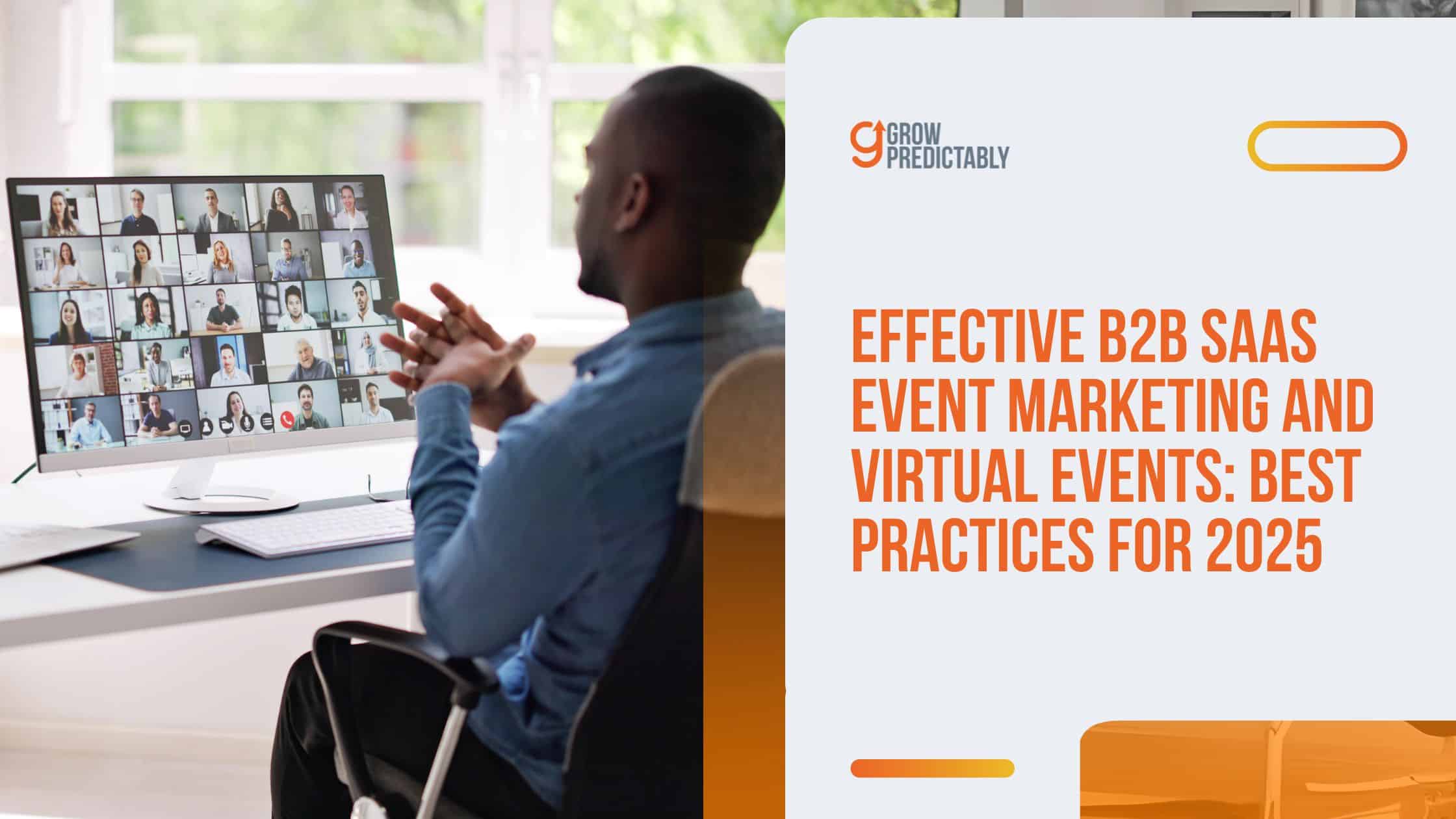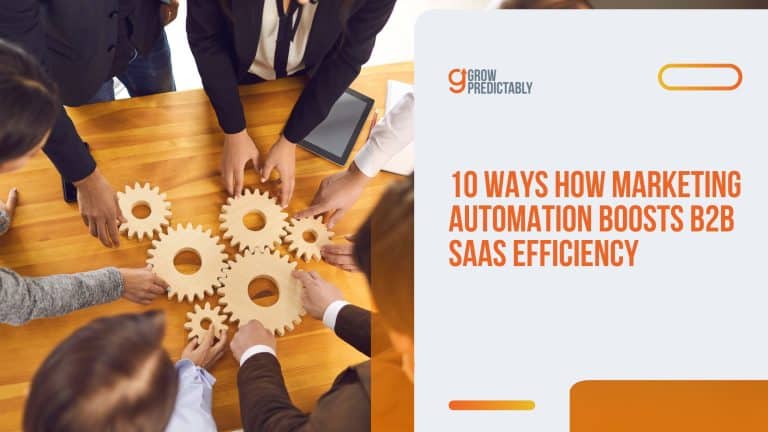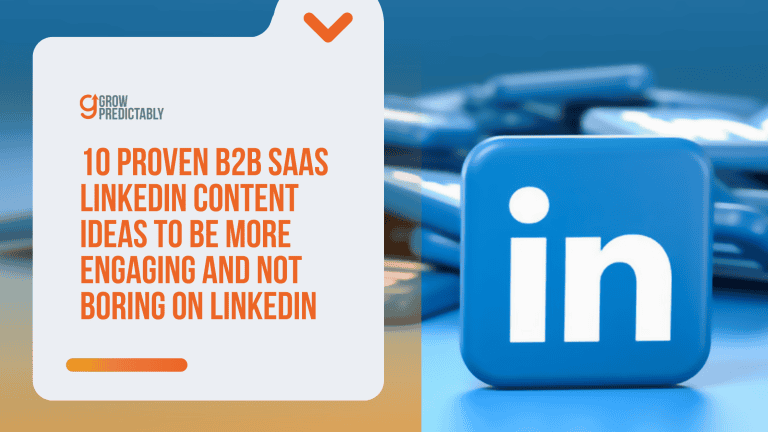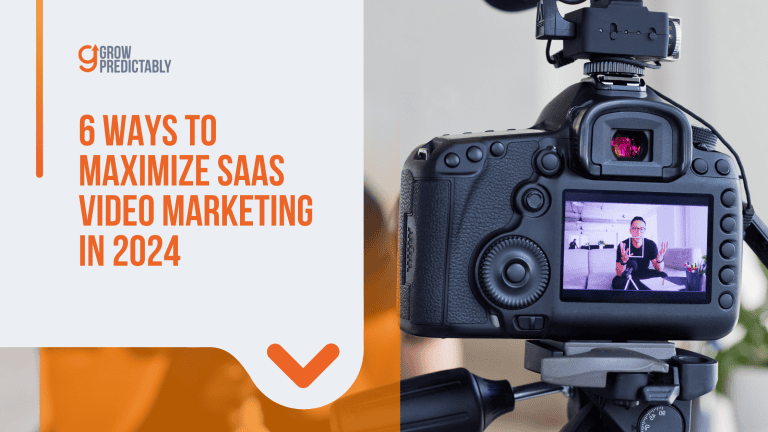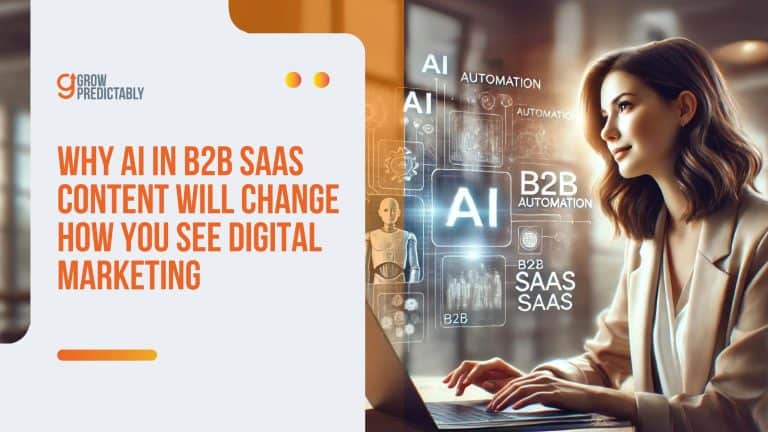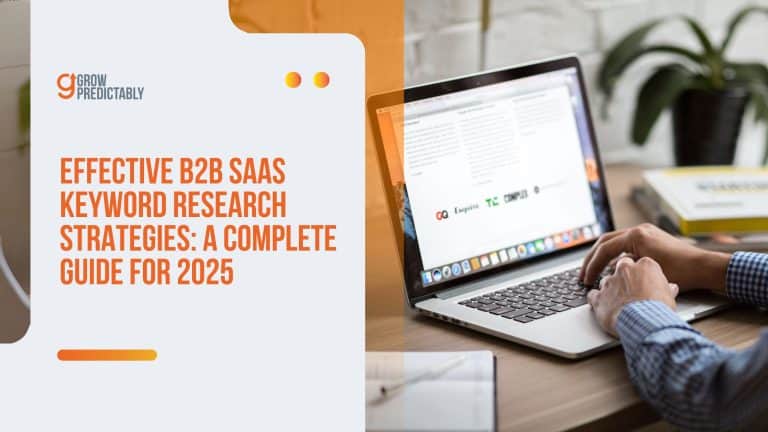Effective B2B SaaS Event Marketing and Virtual Events: Best Practices for 2025
Your virtual events are costing more and delivering less with each passing quarter.
The standard advice isn’t cutting it anymore – “create engaging content,” “use better platforms,” and “improve your promotion.”
Please.
Here’s what nobody’s telling you: The fundamental approach most B2B SaaS companies take to b2b SaaS event marketing and virtual events is completely backward.
While everyone obsesses over production value and speaker lineups, they’re missing the real revenue driver: effective virtual event marketing.
Companies that understand this are seeing their virtual event ROI skyrocket – we’re talking 4.2x higher conversion rates, according to SalesForce’s 2024 B2B Marketing Intelligence Report.
Want to know what these companies know that you don’t?
Read on!
Understanding the Importance of B2B SaaS Event Marketing and Virtual Events
Let me hit you with a reality check – while everyone’s chasing digital leads, 45-50% of B2B purchase decisions get made during live events.
Effective B2B event marketing, including virtual event marketing, is crucial for achieving marketing and business goals such as enhancing brand awareness and building pipelines.
I’ve seen companies burn through six-figure ad budgets trying to force relationships through screens when they could’ve closed deals faster by getting in the room with their prospects.
Direct Pipeline Impact
Here’s what nobody tells you about event conversion rates: they’re 2-3x higher than your standard marketing channels because you’re buying something more valuable than attention – you’re buying time.
When prospects invest hours of their day to attend your event, they subconsciously commit to your solution.
To measure success, it is crucial to establish metrics and KPIs that assess the ROI of these events.
The raw numbers don’t lie:
- A single well-executed workshop can generate a more qualified pipeline than three months of content marketing.
- Event attendees have an average deal size 40% larger than leads from other channels because they understand your value proposition deeply.
- Post-event follow-ups see response rates above 70% compared to the typical 20% from cold outreach.
Market Differentiation
Stop playing the features of arms race.
When every competitor is shouting about AI and machine learning, you need to demonstrate authority, not just claim it.
Live events let you showcase your expertise in a way that LinkedIn posts never will.
Participating in or sponsoring industry events can significantly enhance your brand visibility and help forge connections with potential customers.
The psychology at play is powerful:
- Your prospects are literally sitting in your space, surrounded by your branding and message for hours.
- They’re watching you solve real problems in real time, not just reading about your capabilities.
- They’re experiencing your company culture firsthand, making emotional connections that influence buying decisions.
Relationship Acceleration
I’ve seen more deals close from a three-day marketing events than from six months of nurture campaigns, proving the high ROI of face-to-face engagements.
Here’s why: Marketing events create shared experiences that build trust exponentially faster than any email sequence.
Customer engagement through follow-up strategies, such as thank you emails and personalized follow-ups, helps maintain relationships and keeps your target audience interested beyond the event itself.
Key relationship accelerators that happen naturally at events:
- Informal conversations during breaks reveal pain points prospects won’t share in formal discovery calls.
- Side discussions with multiple stakeholders compress your sales cycle by weeks.
- Real-time objection handling in group settings creates peer validation you can’t manufacture online.
The Evolution of Event Strategy
The market has shifted.
Basic networking events don’t cut it anymore.
Modern B2B events, whether virtual events or hybrid formats, must align with marketing and business goals, delivering concentrated value while facilitating meaningful connections.
Your event strategy needs to be a precision instrument, not a blunt force tool.
The winners in this space are creating hybrid experiences that:
- Combine high-touch in-person elements with digital scale while setting the stage for future events that continue to drive value
- Focus on solving specific problems rather than general industry discussions
- Build exclusive communities that create ongoing value beyond the event itself
Remember: Every minute your prospect spends at your event is a minute they’re not spending with your competitor.
Make it count.
Types of B2B SaaS Events: Breaking Down What Actually Works
Let me cut straight to the chase – 85% of decision-makers need multiple touchpoints across different event formats before they pull the trigger.
Marketing events, including digital and hybrid formats, are effective strategies for engaging target audiences and transitioning from traditional event marketing to more modern, measurable approaches.
I’ve seen SaaS companies waste hundreds of thousands on the wrong event type because they didn’t understand this fundamental truth.

Virtual Events: Scale With Purpose
Virtual events, supported by targeted virtual event marketing strategies, aren’t just cheaper versions of in-person gatherings—they’re precision tools for mass qualification.
When executed correctly, they’re lead-generation machines that collect behavioral data you can’t get anywhere else.
Virtual event platforms, like vFairs, provide integrated marketing tools and foster engagement, including creating a compelling event landing page to streamline registration and attendee tracking.
Here’s what actually moves the needle in virtual events:
- Interactive elements every 12-15 minutes keep attendees engaged – polls, breakout rooms, and live Q&As aren’t optional; they’re essential.
- Recording prospect behavior reveals true intent – track which features they zoom in on during demos, which questions they ask, and which resources they download.
- Follow-up sequences based on engagement patterns convert 3x better than generic nurture campaigns.
In-Person Events: Maximum Impact Through Intimate Settings
Forget massive trade shows.
The highest ROI comes from targeted, intimate gatherings where you can control the environment and conversation.
I’ve seen 20-person executive dinners generate more pipeline than 2,000-person conferences.
Critical success factors for in-person events:
- Curated guest lists where every attendee is a potential buyer or influencer.
- Strategic seating arrangements that facilitate natural problem-solving discussions.
- High-touch follow-up within 24 hours while the connection is still fresh.
Hybrid Events: The New Power Play
Hybrid isn’t just slapping a livestream onto an in-person event.
It’s about creating two distinct but complementary experiences that leverage each format’s strengths.
This is where most companies mess up (including some SaaS companies) – they treat virtual attendees as second-class citizens.
The winning hybrid event formula includes:
- Dedicated engagement teams for both in-person and virtual audiences.
- Platform features that enable meaningful cross-format networking.
- Content designed specifically for each consumption method.
Execution Strategy: The 80/20 Rule
Here’s what actually matters in event execution:
- Pre-event qualification matters more than attendance numbers – better to have 50 qualified prospects than 500 tire-kickers
- Production value is secondary to interaction quality – focus your budget on facilitating meaningful conversations
- Post-event follow-up speed dramatically impacts conversion – your team should be reaching out while competitors are still breaking down their booths
The SaaS companies winning with events right now understand this isn’t about vanity metrics.
Effective marketing efforts are crucial to enhance engagement and promote events successfully.
It’s about creating environments where business gets done.
Period.
Conversion Mechanics
The real money is in the details:
- Virtual events should drive at least 25% live attendance and 40% content engagement
- In-person events need to convert 30% of attendees to sales meetings within 14 days
- Hybrid events must maintain a minimum 60% engagement rate across both formats
The Raw Truth About B2B SaaS Events That No One Talks About
Let me break this down into pure reality.
Most B2B events are glorified social gatherings that drain budgets and deliver zero ROI.
Here’s the unfiltered playbook that actually moves revenue needles and closes deals.

1. Interactive Content Architecture
Forget PowerPoint presentations and generic demos.
Those are dead money.
The harsh truth?
Your prospects need to get their hands dirty with your solution before they’ll ever sign a check.
Most events fail because they treat six-figure decision-makers like college students in a lecture hall.
Here’s what actually drives pipeline:
- Real-time builds where your technical team solves actual problems live – no scripts, no safety nets.
- 20-minute max learning sprints followed by a hands-on application using real customer data.
- Problem-solving stations loaded with sanitized client data expose how your solution handles the ugly edge cases.
- Deep technical sessions where prospects work through their actual integration nightmares with your senior engineers.
- Raw, unfiltered customer panels sharing real numbers, real failures, and real wins.
This isn’t about making friends.
It’s about compressing your sales cycle by forcing prospects to experience your value proposition firsthand.
When they solve real problems with your product, their objections evaporate.
2. Social Engagement Architecture
Stop wasting money on open bars and cocktail hours.
Modern B2B relationships form through shared combat in the trenches.
Your events need to engineer specific scenarios that forge relationships through shared victories and failures.
Social media marketing efforts play a crucial role in promoting these events and engaging with your target audience effectively.
Here’s how you build real connections:
- Cross-functional challenge rooms where diverse teams tackle complex problems using your solution.
- Public development sprints that document every failure and victory in real-time.
- Industry-specific war rooms where peers solve common bleeding neck problems together.
- Expert-led roundtables that drive toward specific, measurable outcomes.
- Peer review sessions where users tear apart each other’s implementations and find gold.
These aren’t networking sessions.
They’re crucibles that forge relationships through shared challenges.
The bonds formed, solving real problems, outlast any amount of small talk.
The reality hits hard: Most companies burn money on events because they’re afraid to push prospects out of their comfort zone.
3. Data-Driven Experience Design
Stop throwing money at event components that don’t drive deals.
Most companies track meaningless metrics like “attendee satisfaction” while ignoring the only number that matters: revenue impact.
Here’s the brutal truth about measuring what moves money.
Here’s what actually predicts pipeline:
- Ruthless tracking of every interaction from first click to final signature.
- Behavioral mapping that exposes which prospects are serious buyers versus tire kickers.
- Hard conversion numbers at every stage prove which activities drive purchasing decisions.
- Dollar-level ROI calculation for every single event component.
- Historical pattern analysis that predicts which prospects will actually buy.
This isn’t about making people happy – it’s about identifying and doubling down on the exact moments that trigger buying decisions.
Drop everything that doesn’t directly connect to revenue.
4. Multi-Channel Value Delivery
The virtual versus physical debate is dead.
Here’s what matters: delivering concentrated value that drives decisions, regardless of format.
Most companies waste resources trying to replicate in-person experiences online instead of leveraging each channel’s unique strengths.
Here’s what drives results across all channels:
- Content streams engineered specifically for each platform’s engagement patterns.
- Interaction mechanics that force meaningful connections regardless of format.
- Cross-platform networking that creates real business relationships, not just contacts.
- Resource delivery systems matched to how buyers actually consume information.
- Follow-up sequences triggered by specific behavioral signals, not generic timelines.
Stop trying to make virtual attendees feel like they’re there.
Start creating experiences that make them take action, regardless of where they are.
5. Strategic Resource Allocation
Your event budget is bleeding money through a thousand small cuts.
Every dollar needs to prove its impact on the pipeline or get reallocated.
Most companies spread their resources thin by trying to do everything instead of going deep into what works.
Here’s how money moves needles:
- Component-level ROI tracking that exposes which elements actually drive deals.
- Staff deployment based on proven conversion impact, not traditional event roles.
- Technology investments that directly improve buying signals and close rates.
- Content production focused exclusively on materials that influence purchase decisions.
- Venue selections based on deal acceleration potential, not aesthetic appeal.
This isn’t about creating beautiful events.
It’s about engineering environments that compress sales cycles and drive decisions.
Every dollar spent needs to connect directly to revenue generated.
The hard truth about implementation: these strategies demand total commitment.
Half measures produce zero results.
Leveraging Technology in B2B SaaS Event Marketing

Most event tech creates digital noise without driving real business outcomes.
The brutal reality?
90% of companies waste budgets on shiny features while missing the core tech stack that actually moves deals forward.
Understanding your target audience is crucial in leveraging technology effectively.
Stop Buying Features, Start Buying Revenue
Event platforms represent your first major decision point.
Forget the fancy add-ons and focus on what drives the pipeline.
Your tech foundation must deliver hard ROI from day one.
Mission-critical platform requirements:
- Real-time engagement tracking that exposes genuine buying signals.
- Automated lead scoring based on interaction patterns.
- Instant alert systems that notify sales when prospects show high intent.
- Custom event flows that adapt based on attendee behavior.
- Integration capabilities with your existing tech infrastructure.
The CRM Connection That Prints Pipeline
Your CRM stands as the single source of truth for revenue operations.
Without seamless CRM integration, your event data dies in silos and kills deal momentum.
Revenue-driving integration points:
- Bi-directional data flow that updates prospect records in real-time.
- Automated task creation based on specific attendee actions.
- Custom lead scoring models that factor in event engagement.
- Pipeline attribution tracking from first touch to closed deal.
- Behavioral trigger systems that prompt immediate sales action.
Interaction Tech That Forces Decisions
Forget basic AR gimmicks.
Modern interaction tech needs to drive concrete business outcomes through meaningful engagement.
High-impact interaction features:
- Live product configuration tools that solve real customer problems.
- Interactive demo environments customized to each prospect’s use case.
- Real-time collaboration spaces for solution architecture.
- Virtual whiteboarding tools that capture solution requirements.
- Technical debugging environments for proof-of-concept testing.
AI That Actually Makes You Money
AI without revenue focus creates expensive distractions.
Every AI implementation needs clear connection to pipeline progression.
Revenue-generating AI applications:
- Predictive matching systems that connect prospects with similar pain points.
- Dynamic agenda optimization based on attendee engagement patterns.
- Automated follow-up sequences triggered by behavior signals.
- Real-time content recommendations driven by interaction data.
- Lead prioritization models based on engagement scoring.
The Integration That Closes Deals
Your tech stack dies without seamless integration.
Every component needs to contribute to a single, revenue-focused ecosystem.
Critical integration requirements:
- Central data warehouse that aggregates all interaction data.
- Automated workflow triggers based on cross-platform signals.
- Unified reporting dashboard showing direct pipeline impact.
- Real-time synchronization across all platform components.
- Scalable architecture that handles peak load periods.
The market’s flooded with event tech that promises engagement but delivers distraction.
Your tech stack must prove its worth in closed revenue, not feature lists.
Next section breaks down exact ROI measurement frameworks for each technology component.
Metrics and Evaluation Techniques for B2B SaaS Events
Most B2B SaaS companies waste time tracking vanity metrics that never connect to revenue.
Here’s the raw truth: 42% of marketers can’t prove event ROI because they’re measuring the wrong things.
Let’s fix that.
Money Metrics Before The Event
Stop obsessing over total registrations.
These pre-event numbers, combined with social media marketing metrics, predict revenue potential and justify your spending.
Numbers that predict pipeline:
- Registration-to-invitation conversion at 35%+ indicates genuine market demand.
- $150-200 cost per registration becomes irrelevant when you’re targeting right.
- Early bird signup rate shows true intent – 25% conversion means you’ve hit a nerve.
- Lead quality scoring based on firmographic matches with your ideal customer profile.
- Budget authority confirmation through registration behavior patterns.
The Numbers That Matter During Game Time
Forget basic attendance tracking.
These real-time metrics expose which prospects are serious buyers versus tire kickers.
Revenue-indicating engagement metrics:
- Check-in patterns in physical or virtual events that reveal purchase intent.
- Session engagement depth through continuous tracking.
- Question quality and frequency during interactive segments.
- Response rates to value proposition testing.
- Digital footprint analysis across all event touchpoints.
Post-Event Metrics That Actually Matter
Most companies celebrate attendance numbers while missing the metrics that predict revenue.
Hard pipeline indicators:
- Direct pipeline influence with multi-touch attribution.
- MQL to SQL conversion velocity compared to other channels.
- Event-specific customer acquisition cost analysis, particularly for virtual event marketing campaigns, demonstrates efficiency.
- Sales cycle compression rates for event-engaged prospects.
- Revenue attribution across 30/60/90-day windows.
Implementation That Forces Results
Your tracking infrastructure determines whether you’re collecting signals or noise.
Critical tracking components:
- Revenue-focused event platforms configured for pipeline tracking.
- UTM architecture that exposes the complete buyer journey.
- CRM campaign structures that attribute every closed deal.
- 24-hour feedback loops that capture purchase intent signals.
- Multi-touch attribution models that prove event ROI.
The Automation That Scales Revenue
Manual tracking kills accuracy and wastes resources.
Your measurement system needs to run like a machine.
Essential automation elements:
- Real-time data aggregation across all event touchpoints.
- Automated scoring models that prioritize high-intent prospects.
- Instant alerts for sales when engagement peaks.
- Predictive analytics that forecast pipeline impact.
- Scalable reporting that connects directly to revenue.
The market’s drowning in meaningless event metrics.
Companies winning the event game focus exclusively on numbers that connect to revenue.
Stop measuring what’s easy and start measuring what makes money.
Case Study: Empowering WSIPC Cooperative Members Through A Hybrid Conference Using Cvent
In this case study we’re featuring WSIPC, a nonprofit cooperative offering technology solutions to K-12 schools, sought to enhance its annual three-day software user group conference, WASWUG, by transitioning to a hybrid model and managing the event internally for the first time.
Problem: WSIPC aimed to deliver a seamless hybrid conference experience that engaged both in-person and virtual attendees. This required live streaming 112 breakout sessions and ensuring inclusivity for virtual participants, all while managing the event with a small team of five.
Solution

To address these challenges, WSIPC utilized several Cvent solutions:
- Registration Platform: Handled registrations through a well-optimized event landing page, payments, and attendee tracking, allowing for personalized experiences and efficient data management.
- Abstract Management and Speaker Resource Center: Streamlined the coordination of over 100 presenters and 62 moderators, facilitating the submission and management of session materials.
- Attendee Hub and Event App: Served as central resources for both in-person and virtual attendees, offering features like agenda building, session details, networking opportunities, and real-time engagement tools.
Approach
WSIPC meticulously planned the hybrid event by:
- Live Streaming and Recording: Conducted 14 simultaneous live-streamed sessions during each of the eight breakout slots over three days, ensuring content was also available on-demand for 90 days post-event.
- Training and Coordination: Provided comprehensive training for presenters, moderators, AV technicians, and IT staff to ensure smooth execution.
- Brand Consistency: Maintained a cohesive conference theme, “The More You Gnome,” across all platforms and materials, enhancing the attendee experience.
Results

The conference achieved record-breaking engagement:
- Attendance: Nearly reached full capacity with 1,200 registrants.
- App Adoption: 888 downloads of the Attendee Hub Event App, indicating high engagement among participants.
- Session Management: Successfully coordinated over 110 sessions using Cvent solutions.
- Exhibitor Participation: Hosted 25 exhibitors and sponsors onsite, with virtual booths remaining accessible for three months post-event, providing extended value.
By leveraging Cvent’s integrated event management tools, WSIPC effectively transitioned to a hybrid conference model, delivering an inclusive and engaging experience for all attendees while efficiently managing the event in-house.
Future Trends and Innovations in B2B SaaS Event Marketing
Forget the hype about holograms.
Here’s the raw truth about event tech that’s actually driving revenue right now and what’s coming next.
Most companies waste resources chasing shiny objects while missing the innovations that print money.
Mixed Reality That Drives Decisions
Stop building fancy demos that don’t close deals.
Mixed reality only matters when it compresses sales cycles and forces buying decisions.
Revenue-driving MR applications:
- Live solution architecture sessions where prospects solve real problems
- Interactive technical demonstrations that expose product capabilities
- Remote testing environments that prove concrete value
- Custom implementation modeling for enterprise deployment
- Real-time integration testing with existing systems
AI That Actually Closes Deals
Most AI matchmaking creates random connections.
Modern systems need to engineer specific interactions that drive pipelines.
Money-making AI implementations:
- Prospect-to-solution matching based on buying signals
- Real-time intent tracking that triggers sales engagement
- Automated meeting orchestration for high-intent prospects
- Behavioral pattern recognition that predicts purchase likelihood
- Dynamic content delivery based on engagement scores
Hybrid Platforms That Print Pipeline
The hybrid platform conversation needs to shift from features to revenue impact.
Next-gen platforms must drive concrete business outcomes.
Pipeline-generating capabilities:
- Seamless transition between physical and digital sales motions
- Multi-language deal acceleration environments
- Immersive product experience centers
- Real-time objection handling systems
- Custom deployment visualization tools
Analytics That Predict Revenue
Stop measuring basic engagement.
Modern analytics need to predict and influence purchasing decisions.
Predictive elements that matter:
- Machine learning models that forecast deal closure probability
- Real-time scoring systems that identify serious buyers
- Automated resource deployment based on revenue potential
- Purchase intent tracking across all touchpoints
- ROI prediction models for event components
Market leaders who implement these innovations see 40% higher engagement rates because they focus exclusively on revenue-driving applications.
But here’s the brutal truth: The technology doesn’t matter if it doesn’t connect directly to the pipeline.
Personalization and Post-Event Follow-Up in B2B SaaS Events
Stop spraying generic content at prospects, hoping something sticks.
HubSpot’s data shows personalized ABM campaigns crush standard approaches with 171% higher engagement.
Here’s how to turn that engagement into revenue.
Account Intelligence That Predicts Deals
Most companies waste time collecting meaningless data.
Your pre-event intelligence needs to expose actual buying potential.
Revenue-driving intelligence points:
- Complete buying committee mapping with decision authority levels
- Digital footprint analysis across all platforms that shows true intent
- Tech stack penetration analysis that reveals integration potential
- Custom buying journey design for each decision-maker tier
- Competitive displacement opportunities based on current solutions
Real-Time Personalization That Forces Action
Generic event experiences kill deals.
Modern personalization needs to drive specific buying behaviors.
Action-forcing personalization elements:
- AI-driven content paths that respond to engagement signals
- Live session modification based on target audience response
- Industry-specific problem-solving rooms
- Customized product demonstrations that solve actual problems
- Persona-based interaction tracks that accelerate decisions
Post-Event Sequences That Print Pipeline
Your follow-up strategy determines whether events generate pipeline or waste budgets.
Every touch needs to drive toward concrete next steps.
Money-making follow-up framework:
- 24-hour personal outreach to hot prospects with specific action items
- 72-hour targeted resource delivery to warm leads based on engagement
- Weekly value delivery to nurture tracks aligned with demonstrated interest
- Custom implementation roadmaps for serious buyers
- Account-specific solution architecture proposals
The Three-Tier System That Closes Deals
Stop treating all post-event leads equally.
Your follow-up needs to match effort with revenue potential.
Revenue-focused segmentation:
- Hot Leads: Direct sales engagement within 24 hours with clear next steps
- Warm Leads: Solution-specific content within 72 hours
- Nurture Track: Value-focused weekly touchpoints based on revealed interests
Companies executing this framework see 40% higher conversion rates because they match effort to revenue potential.
But here’s the truth: Personalization only works when it drives concrete buying decisions.
FAQs
Key Takeaways
B2B SaaS event marketing and virtual events have fundamentally transformed how companies generate pipelines and close deals.
The strategies and frameworks outlined in this guide demonstrate that successful event marketing efforts aren’t about fancy production or endless features—it’s about engineering environments that drive concrete business decisions.
The truth is simple: Events work when built to drive revenue, not just create experiences.
Whether you’re running virtual, in-person, or hybrid events, success comes from a relentless focus on activities that compress sales cycles and force buying decisions.
Start implementing these strategies today.
Begin with one component—whether it’s improving your pre-event qualification, enhancing your real-time engagement tactics, or restructuring your follow-up sequences.
Remember: Every minute your prospect spends at your event is a minute they’re not spending with your competitor.
Want more insights on driving business growth?
Explore our other blogs on digital marketing strategies, business optimization, and success mindset at [blog link].
Your next revenue breakthrough might be just one article away.

